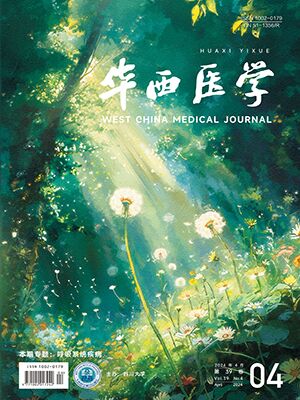| 1. |
Callen JP. Dermatomyositis. Lancet, 2000, 355(9197): 53-57.
|
| 2. |
Wijsenbeek M, Suzuki A, Maher TM. Interstitial lung diseases. Lancet, 2022, 400(10354): 769-786.
|
| 3. |
Fuzzi E, Gatto M, Zen M, et al. Anti-MDA5 dermatomyositis: an update from bench to bedside. Curr Opin Rheumatol, 2022, 34(6): 365-373.
|
| 4. |
Waldman R, DeWane ME, Lu J. Dermatomyositis: diagnosis and treatment. J Am Acad Dermatol, 2020, 82(2): 283-296.
|
| 5. |
Selva-O’Callaghan A, Romero-Bueno F, Trallero-Araguás E, et al. Pharmacologic treatment of anti-MDA5 rapidly progressive interstitial lung disease. Curr Treatm Opt Rheumatol, 2021, 7(4): 319-333.
|
| 6. |
Romero-Bueno F, Diaz Del Campo P, Trallero-Araguás E, et al. Recommendations for the treatment of anti-melanoma differentiation-associated gene 5-positive dermatomyositis-associated rapidly progressive interstitial lung disease. Semin Arthritis Rheum, 2020, 50(4): 776-790.
|
| 7. |
Seeliger B, Carleo A, Wendel-Garcia PD, et al. Changes in serum metabolomics in idiopathic pulmonary fibrosis and effect of approved antifibrotic medication. Front Pharmacol, 2022, 13: 837680.
|
| 8. |
Wang H, Tang J, Chen X, et al. Lipid profiles in untreated patients with dermatomyositis. J Eur Acad Dermatol Venereol, 2013, 27(2): 175-179.
|
| 9. |
Nombel A, Fabien N, Coutant F. Dermatomyositis with anti-MDA5 antibodies: bioclinical features, pathogenesis and emerging therapies. Front Immunol, 2021, 12: 773352.
|
| 10. |
Ahmad S, Mu X, Yang F, et al. Breaching self-tolerance to alu duplex RNA underlies MDA5-mediated inflammation. Cell, 2018, 172(4): 797-810. e13.
|
| 11. |
Dias Junior AG, Sampaio NG, Rehwinkel J. A balancing act: MDA5 in antiviral immunity and autoinflammation. Trends Microbiol, 2019, 27(1): 75-85.
|
| 12. |
Kato H, Takeuchi O, Sato S, et al. Differential roles of MDA5 and RIG-I helicases in the recognition of RNA viruses. Nature, 2006, 441(7089): 101-105.
|
| 13. |
Bay P, de Chambrun MP, Rothstein V, et al. Efficacy of plasma exchange in patients with anti-MDA5 rapidly progressive interstitial lung disease. J Autoimmun, 2022, 133: 102941.
|
| 14. |
Yasui M, Iwamoto T, Furuta S. New therapies in anti-MDA5 antibody-positive dermatomyositis. Curr Opin Rheumatol, 2024, 36(1): 61-68.
|
| 15. |
Spitler KM, Davies BSJ. Aging and plasma triglyceride metabolism. J Lipid Res, 2020, 61(8): 1161-1167.
|
| 16. |
Wu SA, Kersten S, Qi L. Lipoprotein lipase and its regulators: an unfolding story. Trends Endocrinol Metab, 2021, 32(1): 48-61.
|
| 17. |
Coppack SW. Pro-inflammatory cytokines and adipose tissue. Proc Nutr Soc, 2001, 60(3): 349-356.
|
| 18. |
Tang MW, Koopman FA, Visscher JP, et al. Hormone, metabolic peptide, and nutrient levels in the earliest phases of rheumatoid arthritis-contribution of free fatty acids to an increased cardiovascular risk during very early disease. Clin Rheumatol, 2017, 36(2): 269-278.
|
| 19. |
Kim DS, Jeong SK, Kim HR, et al. Effects of triglyceride on ER stress and insulin resistance. Biochem Biophys Res Commun, 2007, 363(1): 140-145.
|
| 20. |
Burman A, Tanjore H, Blackwell TS. Endoplasmic reticulum stress in pulmonary fibrosis. Matrix Biol, 2018(68/69): 355-365.
|




